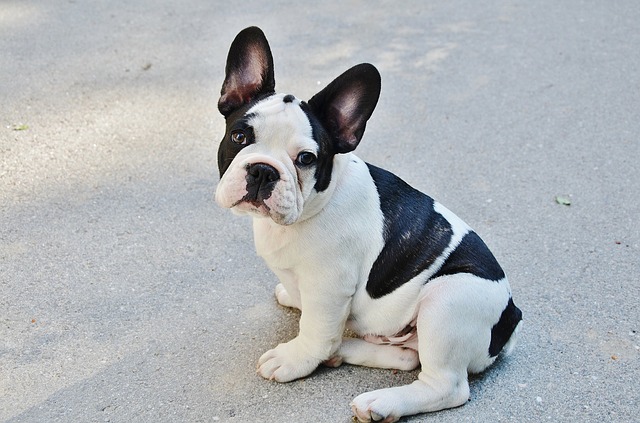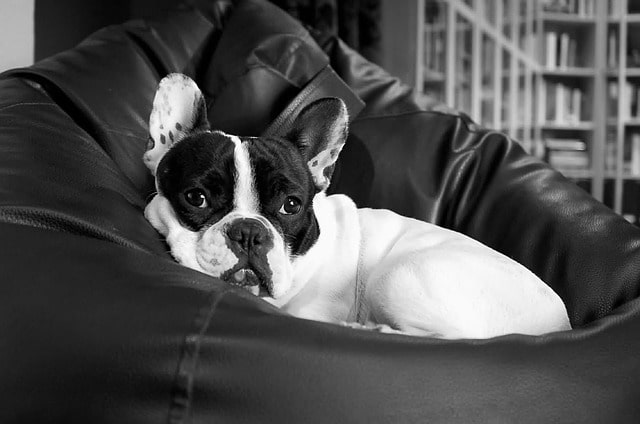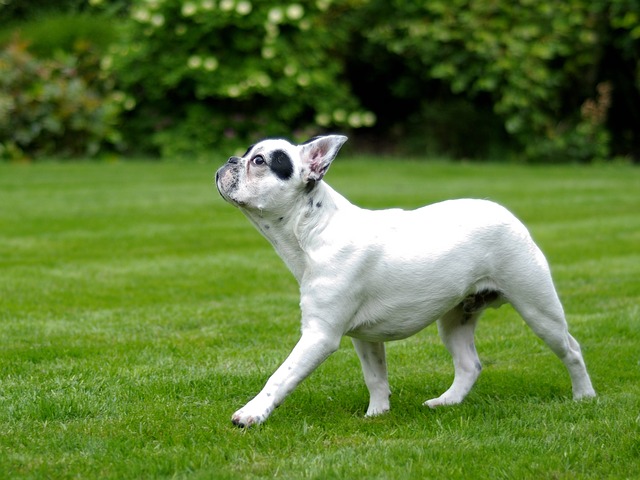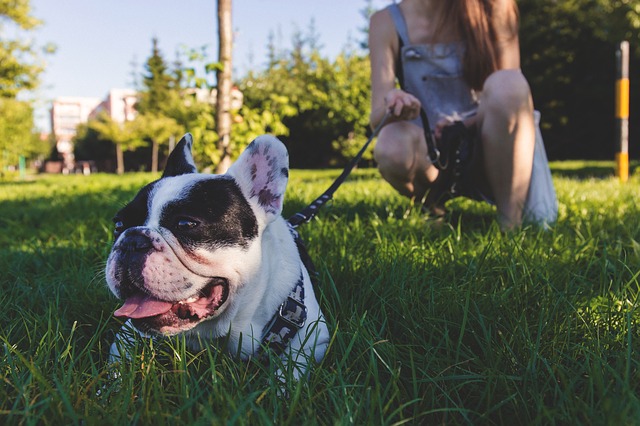French Bulldogs are undeniably one of the most popular dog breeds across the globe. The American Kennel Club ranks them as the most popular dog in New York City and fourth-most desirable dog breeds in the world.
The Frenchies are playful and alert, have pleasant and infectious personalities, adapt well to family life, are good around children, and get along well with other pets.
What’s even more interesting is their unmatched level of intelligence, especially when compared to other pedigree dog breeds.
Another unique characteristic of the Frenchies is the variety of coat color patterns they come in.
There are many physical variations of these dogs, especially when it comes to coat colors. This means that if you prefer dogs of certain colors, this breed is sure to accommodate your preferences.
If it is your first time to deal with Frenchies, however, picking out a new pup can be a little bit intimidating because there are so many terms that are used to describe different Frenchie coat color patterns.
To help you choose the right pet, this post will focus on Pied French Bulldogs. We will cover what a Pied Frenchie is and what you can expect when you own one.
What is a Pied/ Piebald French bulldog?

Pied or Piebald Frenchies are French Bulldogs with predominantly white coats with large dark-colored patches on different parts of the body—mostly on the back, under the neck, and around the ears and eyes.
In other words, for a Frenchie to be recognized as Pied, it must have at least 50 percent of patches or spots of white and another color.
The colors also need to be present on the dog’s body, head, and neck.
However, the spots or patches can also be dark gray, black, or brown. So:
- Fawn Pied French Bulldogs: May have a white coat with fawn patches or a fawn color with black patches.
- Cream Pied French Bulldogs: Have cream coats with fawn patches.
- Blue Pied Frenchies: Have blue coats with patches of white or cream.
Pied shouldn’t be confused with Brindle. Brindle refers to a solid-colored coat that’s often interspersed with lighter-colored hairs while Pied is a lighter coat with darker patches or spots.
So, Pied can be said to be the exact opposite of Brindle.
The Pied Pattern Is a Result of Autosomal Recessive Heredity
Your dog’s genes are grouped together on structures that are commonly referred to as chromosomes.
A dog has 39 pairs of chromosomes. Out of these 39 pairs, one pair is a sex chromosome—it is what determines whether a dog is male or female.
Autosomal inheritance of a gene simply implies that a gene is located on one of the other 38 pairs of chromosomes. This means that both a male and female dog are equally likely to have the gene.
Recessive means that a dog must inherit both copies of the gene to display the trait (in this case, a pied coat pattern).
A dog with only one copy of the recessive gene won’t have a pied coat. Instead, he or she will be a carrier.
However, it won’t be easy to tell that he or she is a carrier without performing a genetic test.
For you to get a Pied French Bulldog, therefore, you have to breed:
- Two pied Frenchies
- A pied Frenchie with a solid colored Frenchie (who is a carrier of the Pied gene)
- Two solid-colored Frenchies (who are both carriers of the Pied gene)
Breeding a Pied Frenchie with a solid colored Frenchie (who is not a carrier of the pied gene) won’t get you Pied French Bulldog! Instead, you will end up with all solid colored Frenchies who are carriers of the Pied gene.
Pied French Bulldog Grooming Needs

Pied Frenchies are fairly easy to groom as all they need is occasional brushing to remove loose hair and distribute natural oils evenly, keeping their coats healthy.
They also don’t have that big hair shedding problem because they are average shedders and have short hair. So, you can always schedule the hair combing tasks to weekends as brushing their coats once a week will just suffice.
Most Frenchie owners recommend Pet grooming gloves because they not only help you remove the shed hair but also straighten the dog’s coat and give a perfect massage as well.
Here are also other great grooming tools that we recommend for Pied Frenchies: 25 Best Deshedding Tools for Short Hair Dogs
Ear and facial wrinkles, as well as the areas under the tail of Pied Frenchies, are susceptible to dirt and dust. Strive to keep them clean and dry to prevent potential bacterial infection. Every time you clean them, take your time to dry the skin between the folds.
Pied Frenchie’s nails should also be trimmed regularly. Considering that Frenchies are not as active as other dog breeds, their nails tend to become uncomfortably long within a short period.
Pied French Bulldog Exercise Requirements

Pied French Bulldogs are considered to be ‘low energy’ breeds, so they don’t need a lot of exercise. Due to their brachycephalic shaped faces, they have narrow nostrils and shortened muzzles, which somehow limit the supply of oxygen to their bodies.
Nevertheless, they are heavy-chested and need short-time exercise routines to keep their weight in check.
Some of the best exercises for these cute, short-legged canines include daily short walks, chasing a hanging piece, catching a ball, etc. Getting them a motion-activated toy can also take care of their exercise needs perfectly.
Frenchies can’t swim because their short muzzles force them to tilt their bodies backward to keep their mouth and nose above water, derailing their swimming efforts.
Their shorts and disproportionately large heads also make it hard for these little cuties to stay afloat in water.
You should always take great care of your Frenchie when he is around swimming pools, rivers, and ponds.
Pied French Bulldog Health Issues

- Brachycephalic Syndrome: Their brachycephalic shaped faces have serious health implications including narrow nostrils, obstructed airways, eye socket related issues, and dental problems. The condition can cause anything from loud or labored breathing, snoring, snuffing to collapse of the airway.
- Heat and Cold Intolerance: These dogs are susceptible to heat exhaustion and often need air-conditioned environments. Don’t expect your pied Frenchie to stay outside on a hot day. Frenchies also get cold easily, so having them in cold climates isn’t ideal either, especially due to their short coats. If you live in cold regions, always dress your Frenchie with a winter jacket.
Related Post: 15 Best Dog Winter Coats with Harness Holes
- Color-Linked Deafness: Dogs with predominantly white coats are often at risk of developing pigment associated hereditary deafness. Ensure that your Pied Frenchie puppy’s hearing is tested before you take him home.
- Patellar Luxation: This is a common problem in small dogs, including Frenchies, and occurs when the patella is not properly aligned and luxates (or slips in and out).
- Potential for Obesity: Because of their heavy bone structures, even a slight weight gain of 5lbs can be problematic for these little cuties. Strive to always monitor your pup’s diet to ensure that it matches his activity level.
- Eye Conditions: French Bulldogs suffer from a wide range of eye conditions including entropion, juvenile cataracts, cherry eye, etc.
- Other conditions that you should be aware of when considering this breed include hip dysplasia, hemivertebrae, intervertebral Disc Disease (IVDD), Von Willebrand’s Disease, Cleft Palate, and allergies among others.
How Much Should You Pay For A Pied French Bulldog?

Frenchie prices vary depending on coat color, location, and breeding lines. Expect to pay between $1500 and $3000 for your Pied or any other Frenchie.
However, like other desirable breeds, Frenchies with exceptional breeding lines tend to come at high price points—some even cost up to $10,000!
One of the top reasons why some Frenchies can attract such high price tags is whelping and dystocia issues. A bigger percentage of Frenchies can’t deliver babies the normal way due to their narrow hips.
The hefty price tags, therefore, reflect genetic examination, artificial insemination, and Caesarian costs.
But a breeder should never quote ‘rare coat pattern’ as the reason for a Frenchie’s high price tag. The term ‘rare’ is usually used as a marketing strategy to make you feel that the puppy you are about to buy is special than others.
‘Rare’ coat patterns can be fashionable, but they could also mean undesirable colors that are not recognized as typical of Frenchies. This means that there could be undesirable health issues with such colors, which many Frenchie lovers and communities know nothing about.
Ensure that you buy your Pied French bulldog from a responsible breeder who is registered by a reputable Kennel Club. Registered breeders do everything in their power to ensure that your puppy is healthy and happy.
Finally, meet the puppy’s parents to figure out their health and temperaments.
Related Post: Pros and Cons of Adopting Vs. Buying a Pet
Conclusion
We hope this guide has given you a good idea of the basics you should know about Pied French Bulldogs as well as what to expect when you decide to welcome one to your home.
When all’s said and done, Pied French Bulldogs are amazing breeds. They are unique (because no two coat patterns are alike), affectionate, social, intelligent, and adorable.
However, like other breeds, they come with their own unique challenges. But with proper care, training, and some prevention measures, the benefits of owning these little canines outweigh the potential challenges.
While buying a pied Frenchie may break your bank a bit, you’ll soon realize that owning this adoring breed is worth every penny.
Good luck in finding a Pied Frenchie that suits your requirements and personality!
As an Amazon Associate, we may receive a small commission from qualifying purchases but at no extra cost to you. Learn more. Amazon and the Amazon logo are trademarks of Amazon.com, Inc, or its affiliates.

